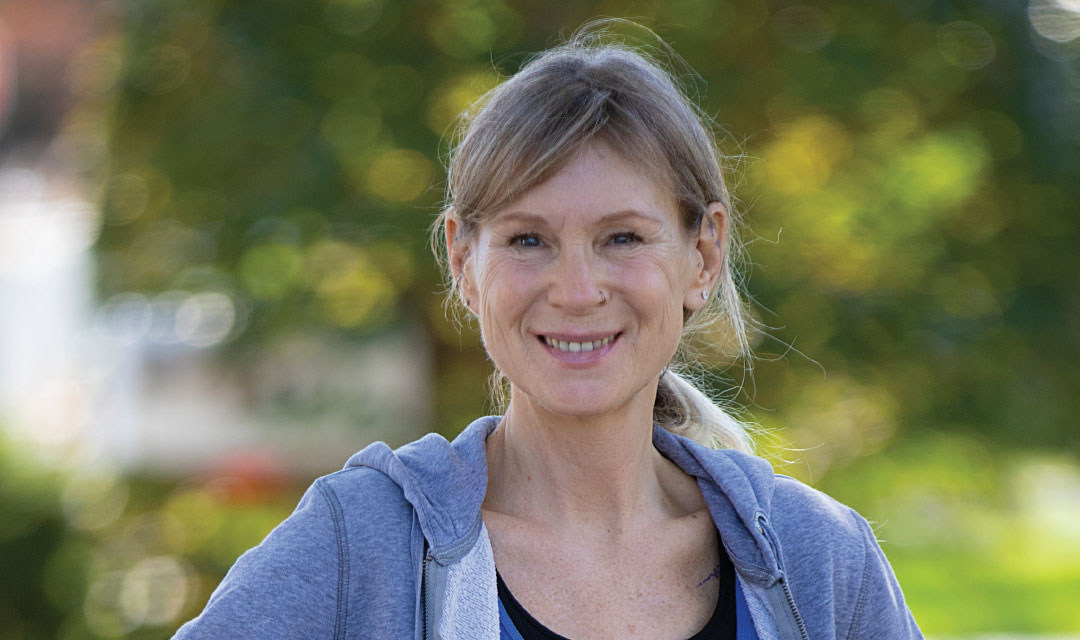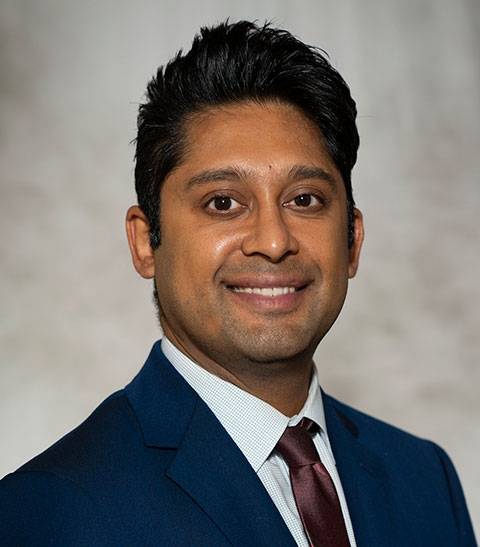“It’s worth finding a good doctor. I would recommend Dr. Jandhyala to anyone. I was thanking him so much because I was like a new person.”

When Jennie Fazio strained her lower back shoveling ice in 2011, she didn’t think anything of it. Yes, it hurt. But the pain would fade—at least for a while—after the Toms River resident took ibuprofen and applied heat and ice packs. “Every now and then, I would lift something like a case of water and throw my back out again,” recalls Jennie. Since home remedies seemed to work, she didn’t see a doctor.
But in 2021, the pain hit worse than ever. “It started in my back, around my hips,” she says. “It went into my tailbone and down the back of my left leg. If I bent over, I’d have trouble straightening up. The pain was excruciating. I almost didn’t want to get up.”
Not being able to bend affected Jennie’s daily life. She enjoyed gardening in her backyard but could plant or weed only if she sat cross-legged on the ground. Exercising was impossible. Driving, doing chores—even getting dressed—was agonizing. “I try not to let anything hold me back,” she says, “but it just got too bad for me.”
Discovering The Problem

She finally resolved to see a doctor but had misgivings. She worried that her back pain wouldn’t seem like a big deal. But Chanakya (Sean) Jandhyala, MD, an orthopedic surgeon at Community Medical Center (CMC) and a member of RWJBarnabas Health Medical Group, put her at ease. Dr. Jandhyala listened to her—and didn’t dismiss her pain. “He told me, ‘You know what? I’ve seen people who have less pain than you do and are in worse shape,’” she says.
Dr. Jandhyala determined that she had a herniated disk. This common condition occurs when cushions of tissue between bony vertebrae in the spine tear or leak, allowing material in the disk’s center to ooze out and press on spinal nerves.
Jennie’s herniated disk was located on the lowest bone of her spine. “That was causing pain radiating down her left leg,” Dr. Jandhyala says. “Besides low back pain, she predominantly was having severe left leg radiculopathy—what people traditionally call sciatica.”
Physical therapy focused on strengthening muscles in Jennie’s legs, abdomen and back. Bolstering core muscles provides a kind of internal brace that can help stabilize the spine as the body works to absorb the herniated portion of the disk. “But this process can take months,” Dr. Jandhyala says.
Dr. Jandhyala also provided steroid injections to help reduce inflammation. But the shots offered Jennie only temporary relief.
Most people with herniated disks—a leading cause of back and leg pain—don’t need surgery, says Dr. Jandhyala. “We always try to see if you can get better without a procedure,” he says. “But if more conservative measures fail, there is a minimally invasive option that can usually be done on an outpatient basis and can greatly improve your quality of life.”
In a couple of months, Jennie was back in Dr. Jandhyala’s office. This time she cried. “I told him, ‘Nothing is helping,’” she recalls. “‘If it means having surgery, I’m ready, because I can’t live like this.’”
Minimally Invasive Relief
After an MRI confirmed Dr. Jandhyala’s diagnosis, he performed a minimally invasive procedure known as a lumbar diskectomy in September 2022. He made a small incision about the size of a quarter in her lower back near her tailbone. Using a tube with a microscope attached, he made a small hole in what’s called the L5 vertebra, located the part of the disk that bulged out and removed it so it no longer pinched or squeezed the nerve.
In the recovery room, Jennie was amazed. “The pain was totally gone,” she says. “Other than some soreness from the incision, I felt good.”
When Dr. Jandhyala cleared her to go home the next day, Jennie marveled at all the ordinary things she could do at home without discomfort that most people take for granted—getting out of bed, using the bathroom, lifting her knees, putting on clothes, driving, sitting on the sofa. After a few weeks, she could even bend better.
During the customary six-week recovery, Jennie looked forward to walking, yoga and cleaning up her yard and garden for spring.
“It’s worth finding a good doctor,” Jennie says. “I would recommend Dr. Jandhyala to anyone.” At her two-week checkup after surgery, she was in tears again—this time from joy. “I was thanking him so much,” she says, “because I was like a new person.”
Spine Problems That Surgery Can Help Resolve
Vertebrae, joints, disks, nerves—the sheer complexity of the spine combined with the stresses placed on it provide ample opportunity for problems to develop. Some of the most common that may warrant surgery include:
- Herniated disks: squeezing of soft material from disks into surrounding tissue
- Spine degeneration: a loss of structure or function
- Spinal stenosis: a narrowing of spaces in the spine that can place pressure on nerves
- Scoliosis: a sideward curving of the spine
- Fractures: a break or crack in a vertebral bone
- Tumors: a growth, possibly cancerous, that may spread
- Infection: bacterial or fungal growth that can cause pain